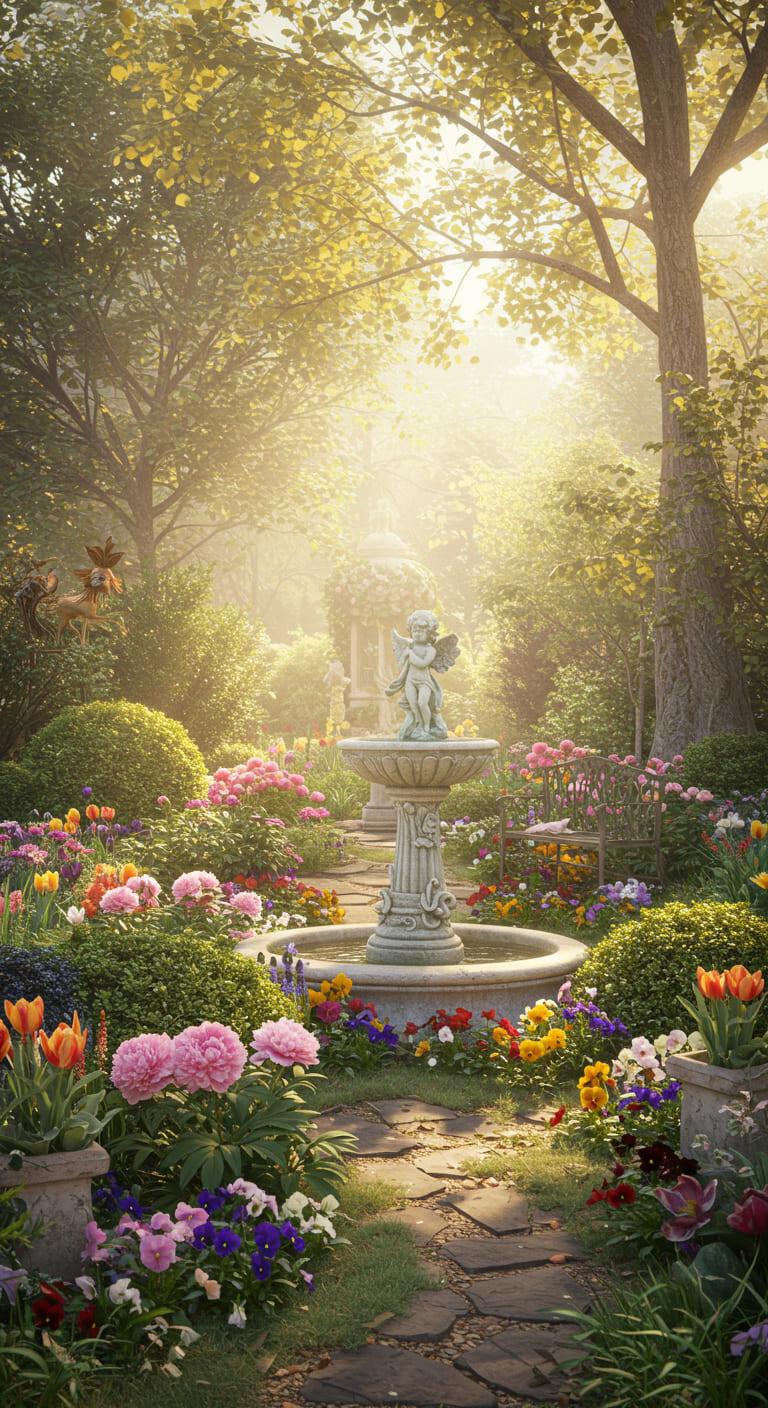As an avid gardener, I’ve often pondered the mysteries of bulb planting. One question that frequently arises is: will bulbs grow if planted too deep? This dilemma has puzzled many gardeners, both novice and expert alike. In this article, I’ll delve into the science behind bulb planting depth and share my personal experiences, tips, and insights to help you cultivate a thriving garden.
Understanding Bulb Basics
Before we explore the depth question, it’s essential to understand what bulbs are. Bulbs are storage organs that contain all the nutrients and energy a plant needs to grow. They serve as a reservoir for the plant, allowing it to survive through unfavorable conditions.
The Anatomy of a Bulb
To appreciate how deep to plant bulbs, it helps to know their anatomy:
- Basal Plate: The flat bottom where roots emerge.
- Scales: The fleshy layers that store energy.
- Shoot: The developing stem that will grow upward.
Understanding these parts helps us realize how crucial planting depth is for bulb health and growth.
Optimal Planting Depth for Bulbs
Generally, the rule of thumb for planting depth is to place bulbs at a depth that is two to three times their height. For example, a bulb that is 2 inches tall should be planted 4 to 6 inches deep. However, this guideline can vary based on the type of bulb and local soil conditions.
Factors Influencing Planting Depth
Several factors can influence how deep you should plant your bulbs:
- Bulb Size: Larger bulbs can be planted deeper than smaller ones.
- Soil Type: Sandy soils drain quickly, while clay soils retain moisture.
- Climate: Colder climates may require deeper planting to protect bulbs from freezing.
- Pests and Animals: In areas with digging animals, deeper planting can help protect bulbs.
What Happens If You Plant Bulbs Too Deep?
Now, let’s tackle the core question: what happens if you plant bulbs too deep? The answer is not as straightforward as one might think.
Potential Consequences of Deep Planting
When bulbs are planted too deep, a few issues can arise:
- Delayed Growth: Bulbs may struggle to push through the soil, leading to delayed blooming.
- Energy Depletion: The bulb can exhaust its energy reserves before reaching the surface.
- Moisture Retention: In overly deep soil, bulbs may not receive adequate moisture or drainage, leading to rot.
- Weak Stems: If they do manage to grow, they may produce weak, spindly stems that can’t support flowers.
Personal experience has taught me that while some bulbs may still sprout if planted too deep, the results are often less than ideal. For instance, I once planted tulip bulbs 8 inches deep, thinking they would be safe from winter chill. While they eventually pushed through, the flowers were far less vibrant than those planted at the recommended depth.
Can Bulbs Still Grow If Planted Too Deep?
So, can bulbs still grow if planted too deep? Yes, but the success rate and quality of growth significantly diminish. Some bulbs, like daffodils and hyacinths, are more resilient and can occasionally manage to sprout from deeper depths. However, others, like lilies, may struggle more.
Case Studies: Real-Life Experiences
Let’s look at a couple of real-life examples to illustrate this point:
Case Study 1: Tulips
In my garden, I planted tulips at varying depths. The ones at the correct depth bloomed beautifully, while those planted too deep were stunted and produced fewer flowers. This experience reinforced the importance of adhering to depth guidelines.
Case Study 2: Daffodils
On the contrary, I once planted a batch of daffodils too deep, around 6 inches instead of the recommended 4 inches. To my surprise, they still emerged and bloomed, albeit a week later than their shallower counterparts. This showed me that some bulbs could adapt, but the overall vigor was compromised.
Best Practices for Planting Bulbs
To avoid the pitfalls of deep planting, here are some best practices I’ve developed over the years:
1. Follow the Depth Guidelines
Stick to the rule of planting bulbs two to three times their height. This is your safest bet for success.
2. Test Your Soil
Understanding your soil type can help you decide how deep to plant. For instance, in sandy soils, you might consider planting slightly shallower.
3. Consider Climate Conditions
In colder regions, planting deeper may provide insulation, but make sure it’s within the recommended range.
4. Monitor Water Levels
Ensure that the soil remains moist but not waterlogged, as this can lead to rot.
5. Be Mindful of Pests
If you have issues with animals digging, consider using barriers or planting deeper, but within reason.
Gardening Tips for Successful Bulb Growth
In addition to planting depth, there are other factors to consider for a flourishing bulb garden:
Choose Quality Bulbs
Always select healthy, firm bulbs to ensure the best growth. Avoid any that feel soft or show signs of mold.
Prepare the Soil
Loosen the soil and add organic matter like compost to improve drainage and nutrient content.
Plant at the Right Time
Timing is crucial for bulb planting. Spring-flowering bulbs should be planted in the fall, while summer-flowering bulbs are best planted in spring.
Fertilize Wisely
Use a balanced fertilizer to give your bulbs an extra boost. However, be cautious not to over-fertilize, as this can lead to excessive foliage growth at the expense of flowers.
Mulch for Protection
Applying a layer of mulch can help retain moisture and protect bulbs from temperature fluctuations.
Common Bulb Planting Mistakes to Avoid
Throughout my gardening journey, I’ve made my share of mistakes. Here are some common pitfalls and how to avoid them:
1. Ignoring Depth Guidelines
As we’ve discussed, planting too deep can hinder growth. Always adhere to the recommended depths.
2. Forgetting About Drainage
Bulbs need well-drained soil. If your garden has heavy clay, consider raised beds or amending the soil.
3. Planting in the Wrong Season
Timing is critical. Plant your bulbs at the right time to ensure they have the best chance of thriving.
4. Overcrowding
Give your bulbs enough space to grow. Overcrowding can lead to competition for nutrients and light.
FAQs About Bulb Planting
1. Can I dig up and replant bulbs that I think are too deep?
Yes, if you suspect your bulbs are too deep, you can carefully dig them up and replant them at the correct depth.
2. How deep should I plant bulbs in sandy soil?
In sandy soil, you might consider planting bulbs at a shallower depth, around 2 times their height.
3. Are there any bulbs that thrive when planted deep?
Some bulbs, like certain types of daffodils, may adapt to deeper planting, but it’s better to follow guidelines for optimal growth.
Conclusion
In conclusion, while it is possible for bulbs to grow if planted too deep, the results are often subpar. Adhering to the recommended planting depth is crucial for ensuring a vibrant and successful garden. By following the tips and insights shared in this article, you can cultivate a beautiful display of blooms that will delight you and your garden visitors alike.
If you found this article helpful, please consider signing up for our newsletter for more gardening tips, and don’t forget to share it with friends and on social media. Let’s grow the gardening community together!
Burpee, 9 Quarts | Premium Organic Potting Natural Soil Mix Food Ideal for Container Garden-Vegetable, Flower & Herb Use for Indoor Outdoor Plant
$12.99 (as of 27/03/2025 01:22 GMT -03:00 - More infoProduct prices and availability are accurate as of the date/time indicated and are subject to change. Any price and availability information displayed on [relevant Amazon Site(s), as applicable] at the time of purchase will apply to the purchase of this product.)
Sign up for our newsletter and stay up to date with exclusive news
that can transform your routine!




